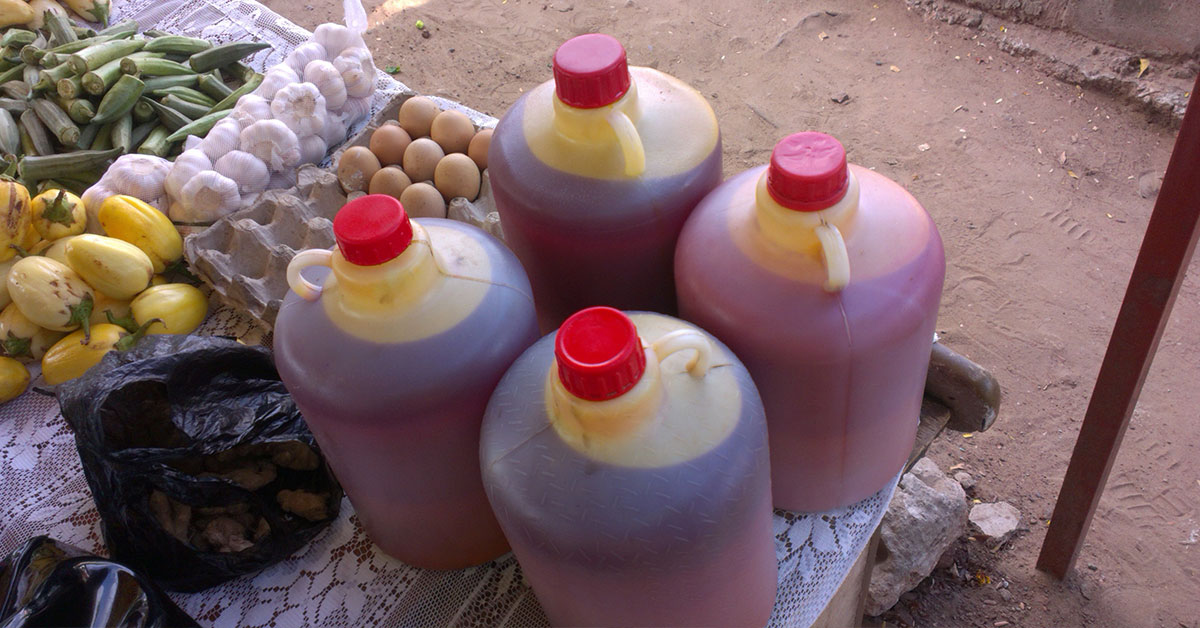
25 Other Names For Palm Oil – They’re Sneaking These Into Your Food!
- Thomas Nelson
- September 15, 2023
- Nature, Sustainable Living
- 0 Comments
In an era where conscious consumerism is on the rise, many of us strive to make informed choices about the products we bring into our homes. Yet, there’s a stealthy ingredient hiding in a multitude of everyday items, from our favorite snacks to our bathroom essentials, that often goes unnoticed—palm oil.
While palm oil itself isn’t inherently malevolent, its clandestine presence in countless products has raised concerns about its impact on the environment, wildlife, and indigenous communities. Join us as we unveil the secretive ways in which palm oil infiltrates our food, cosmetics, and household goods, and explore the implications of this hidden ingredient on our planet and society.
What’s the problem with palm oil?
Palm oil is a controversial and widely debated commodity due to its environmental and social impact. Here are some of the main concerns associated with palm oil production:
- Deforestation: One of the most significant issues with palm oil is its link to deforestation. Large areas of tropical rainforests in countries like Indonesia and Malaysia have been cleared to make way for palm oil plantations. This destruction of natural habitats contributes to biodiversity loss and can threaten endangered species like orangutans, tigers, and rhinos.
- Habitat Destruction: The expansion of palm oil plantations often leads to the displacement of indigenous communities and local people who depend on these forests for their livelihoods. This can result in social conflicts and human rights abuses.
- Environmental Impact: The conversion of forests to palm oil plantations contributes to greenhouse gas emissions and climate change. Forests, especially peatlands, store significant amounts of carbon, and when they are cleared and drained for palm oil cultivation, carbon is released into the atmosphere.
- Burning Practices: In some regions, including Indonesia, palm oil companies have used slash-and-burn techniques to clear land for plantations. This practice not only releases enormous amounts of carbon dioxide but also causes dangerous air pollution and haze, affecting human health.
- Biodiversity Loss: The monoculture nature of palm oil plantations reduces overall biodiversity. Many species cannot survive in these plantations, which are often devoid of the diverse ecosystems found in natural forests.
- Water Pollution: The use of pesticides and fertilizers in palm oil cultivation can lead to water pollution, harming aquatic ecosystems and potentially affecting human health when contaminated water is used for drinking or irrigation.
- Ethical Concerns: Labor abuses and poor working conditions have been reported in some palm oil plantations, raising ethical concerns about the treatment of workers.
It’s important to note that the palm oil industry has made efforts to address some of these issues through initiatives like the Roundtable on Sustainable Palm Oil (RSPO), which promotes the use of sustainable practices in palm oil production. However, criticism has arisen regarding the effectiveness and enforcement of such initiatives.
Many consumers and advocacy groups advocate for responsible sourcing and labeling of palm oil products, supporting sustainable palm oil practices, and reducing overall palm oil consumption by choosing alternatives in order to mitigate the negative environmental and social impacts associated with palm oil production.
Why is palm oil used?
Palm oil is used in a wide range of products and industries for several reasons:
- Versatility: Palm oil is highly versatile and can be used in both food and non-food products. Its semi-solid consistency at room temperature makes it suitable for various applications.
- Texture and Consistency: In the food industry, palm oil is often used to enhance the texture and consistency of products. It provides a creamy and smooth texture, which is valuable in items like margarine, ice cream, and bakery goods.
- Long Shelf Life: Palm oil has a long shelf life due to its high saturated fat content. This makes it an attractive choice for processed foods, as it helps extend the product’s freshness and prevents spoilage.
- High Melting Point: Palm oil has a higher melting point compared to many other vegetable oils. This makes it suitable for use in products that require stability at high temperatures, such as frying oils and baked goods.
- Flavor Neutral: Palm oil has a relatively neutral flavor, which means it doesn’t significantly impact the taste of the final product. This makes it a suitable choice for a wide variety of food items where a strong flavor is not desired.
- Cost-Effectiveness: Palm oil is often more cost-effective than other vegetable oils, which makes it an attractive option for food manufacturers looking to keep production costs down.
- Non-Food Applications: Palm oil is also used in non-food products, such as cosmetics, personal care items, and cleaning products. Its properties, including its ability to create stable emulsions and provide moisture to the skin, make it valuable in these applications.
- Biofuel Production: Palm oil is used as a feedstock for the production of biodiesel, a renewable and environmentally friendly alternative to fossil fuels.
- Industrial Uses: Beyond the food and cosmetic industries, palm oil is used in various industrial applications, including lubricants, candles, and soaps.
It’s important to note that while palm oil offers many functional benefits, its production is associated with environmental and social concerns, as discussed in a previous response. As a result, there has been growing awareness and efforts to promote the responsible and sustainable production of palm oil to mitigate its negative impacts. Consumers and companies are increasingly seeking alternatives and supporting sustainable sourcing practices to address these concerns.
25 other names for palm oil
Palm oil often gets packaged under a multitude of different names, which can make it challenging for consumers to identify its presence in products. This practice is employed by manufacturers to obscure the use of palm oil and may involve a variety of alternative names, such as “vegetable oil,” “vegetable fat,” “palmate,” “sodium lauryl sulfate,” or even specific chemical compounds like “palmitate” and “stearate.”
These alternative names can be found in both food and non-food items, further complicating efforts to make informed choices about palm oil consumption. As a result, consumer awareness and education about these hidden sources of palm oil have become essential in advocating for responsible and sustainable sourcing practices. This is a full list of 25 alternative names for palm oil:
- Palmitic acid
- Hydrogenated palm glycerides
- Palmitate
- Vegetable fat
- Stearic acid
- Palm stearine
- Glyceryl
- Palmitoyl tetrapeptide-3
- Vegetable oil
- Stearate
- Palm kernel oil
- Palmolein
- Sodium palm kernelate
- Octyl palmitate
- Etyl palmitate
- Sodium kernelate
- Palm kernel
- Palmate
- Palmityl alcohol
- Sodium lauryl lactylate/sulphate
- Palm fruit oil
- Sodium lauryl sulfate
- Elaeis guineensis
- Palmitoyl oxostearamide
- Sodium laureth sulfate
What products usually contain palm oil?
Palm oil is a common ingredient in a wide range of products, both in the food and non-food industries. Here are some examples of products that often contain palm oil:
Food Products:
- Processed Foods: Many processed foods, such as cookies, crackers, and baked goods, contain palm oil as it helps give these products a desirable texture and shelf life.
- Margarine: Palm oil is used in the production of margarine to achieve a creamy consistency.
- Instant Noodles: Palm oil is often used in the preparation of instant noodles.
- Chocolate: Some chocolate products contain palm oil as an ingredient.
- Ice Cream: Palm oil may be used in ice cream to improve its texture and prevent melting.
- Snack Foods: Many snack items like chips, popcorn, and fried snacks are made using palm oil for frying.
- Baked Goods: Palm oil is used in various baked goods, including bread, pastries, and doughnuts.
- Nutella and Similar Spreads: Palm oil is a common ingredient in chocolate spreads like Nutella.
- Instant Soups and Sauces: It can be found in instant soups and sauce mixes.
- Cereals: Some breakfast cereals may contain palm oil.
Non-Food Products:
- Personal Care Products: Palm oil is used in cosmetics, soaps, shampoos, and skincare products due to its moisturizing properties.
- Cleaning Products: Some cleaning products, such as detergents and soaps, contain palm oil.
- Biofuels: Palm oil is used as a feedstock in the production of biodiesel.
- Candles: It can be used in the manufacture of candles.
- Industrial Lubricants: Palm oil is utilized in industrial applications, including lubricants.
It’s important to note that palm oil can be listed under various names and aliases on product labels, making it challenging for consumers to identify its presence. To make informed choices and support sustainable practices, consumers often need to look for specific certifications like the Roundtable on Sustainable Palm Oil (RSPO) or choose products explicitly labeled as “palm oil-free.” Increasing awareness and advocacy for responsible palm oil sourcing are essential steps in addressing the environmental and social concerns associated with palm oil production.

